Choosing the Right Pallet Inverter for Turkey's Demands in Cold Chain Efficiency and Hygiene Standards
Running a business that relies on a cold chain, especially in a dynamic market like Turkey, is a constant battle. You worry about maintaining the perfect temperature for your goods, from fresh produce to critical pharmaceuticals. But a hidden threat often goes unnoticed: the pallet. A single broken wooden pallet can halt your entire operation, leading to product damage. Even worse, a contaminated pallet can introduce pests or bacteria into your hygienic facility, risking a costly product recall and damaging your reputation with customers. It's a logistical challenge where a small problem can quickly become a massive financial headache.
Choosing the right pallet inverter for Turkey's specific needs means selecting a machine that directly addresses cold chain and hygiene challenges. The ideal solution is a 180-degree inverter, preferably constructed from stainless steel or a fully galvanized, wash-down-ready material. This ensures durability in cold, moist environments and meets strict hygiene standards for food and pharmaceutical applications. Key features to prioritize are fast cycle times to minimize temperature exposure, compatibility with your existing plastic or aluminum in-house pallets, and adherence to both Turkish and EU regulations for any goods destined for export. A pallet inverter is not just a piece of equipment; it's a strategic tool to protect your products, streamline your operations, and uphold the highest quality standards.
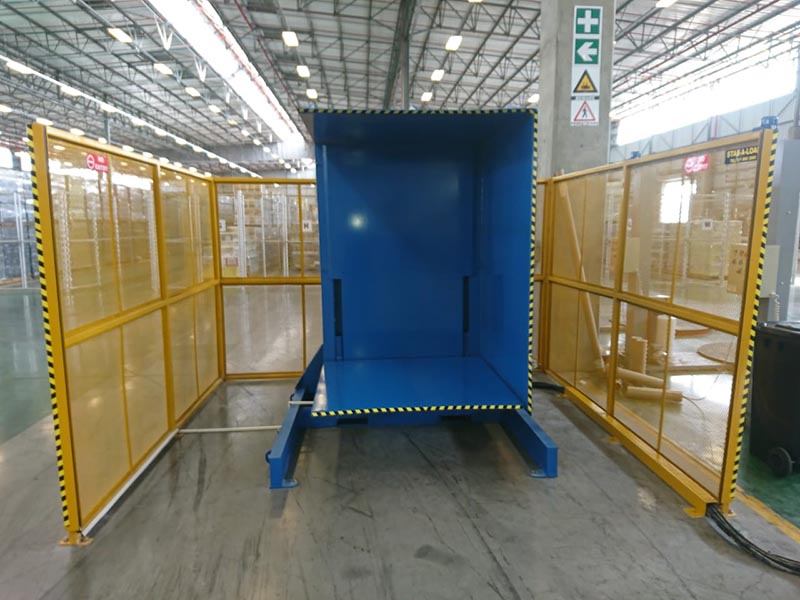
I've spent my entire career in the heavy-duty world of steel coil packing. I know what it means to invest in machinery. It's about more than just the initial price tag; it's about reliability, performance, and long-term value. I learned that the hard way when I started my own factory. A cheap machine that breaks down costs you far more in downtime and lost business than a quality machine costs upfront. The principles are the same whether you're handling a 20-ton steel coil or a pallet of temperature-sensitive vaccines. The equipment must be a reliable partner in your success. That's why I want to share what I've learned. Let's break down how to choose a pallet inverter that will be a true asset for your Turkish operations, not just another machine on the floor.
How do pallet inverters specifically boost cold chain efficiency in Turkey?
Every second counts in the cold chain. Your team is in a constant race against the clock. When a shipment arrives, every minute it spends on the loading dock, outside of its controlled temperature, risks degrading its quality. Manually transferring goods from a broken or non-compliant pallet to a new one is slow, physically demanding, and introduces a huge risk of damage and temperature fluctuation. This manual process is a bottleneck that slows down your entire warehouse.
This inefficiency doesn't just waste time. It causes truck backups at your receiving bay, which can lead to detention fees and strained relationships with logistics partners. It means your expensive cold room doors are open longer, driving up energy bills. You might even have to hire extra staff just to perform this one repetitive, high-risk task. All these factors eat away at your profit margins and create unnecessary stress for your team. A pallet inverter offers a direct solution, transforming this chaotic, manual process into a swift, controlled, and automated function that protects both your product and your bottom line.
A pallet inverter is a game-changer for cold chain efficiency in Turkey because it allows for the extremely fast exchange of pallets, a process that is critical for temperature-sensitive goods like food and pharmaceuticals. By mechanizing the transfer, it drastically reduces the time products are exposed to ambient temperatures. This automation also cuts down on the need for manual labor, freeing up your staff for more valuable tasks. Furthermore, it significantly lowers the risk of product damage that is common during manual restacking and provides an opportunity for quick quality inspection of goods at the bottom of the load without disrupting the entire pallet.
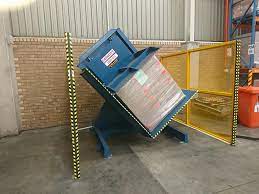
Dive Deeper: The Mechanics of Efficiency
Let's get into the specific ways an inverter drives efficiency. It's not just about being faster; it's about being smarter and safer in every aspect of the operation. Turkey's unique position as a logistical bridge between Europe, Asia, and the Middle East means that goods are constantly moving. Efficiency isn't a luxury; it's a requirement to stay competitive.
Speed and Temperature Integrity
The primary benefit is speed. Manually de-stacking and re-stacking a pallet can take two workers 15 to 20 minutes. A pallet inverter can perform the same task with one operator in about 60 to 90 seconds. This drastic reduction in time is crucial for minimizing "temperature excursion," the period when a product deviates from its required temperature range. For frozen foods, pharmaceuticals, or even fresh flowers, this can be the difference between a saleable product and a total loss. In a busy Turkish distribution center handling imports and exports, this speed allows for much higher throughput, meaning more trucks can be processed per hour.
Labor Optimization and Safety
Manual handling of heavy boxes is one of the leading causes of workplace injuries, particularly back strain. These injuries result in lost workdays, potential legal claims, and lower team morale. A pallet inverter turns a strenuous, two-person job into a safe, one-person, push-button operation. This not only improves worker safety but also optimizes your labor force. The workers who were previously tied up with manual restacking can be reassigned to other critical tasks like inventory management or order picking. In a market where skilled labor is a valuable asset, this is a significant operational advantage.
Damage Reduction and Quality Control
When people manually handle goods, damage is almost inevitable. Boxes get dropped, corners get crushed, and packaging gets torn. A pallet inverter clamps the entire load securely before rotating it. The process is smooth and controlled, reducing the risk of product damage to virtually zero. This is especially important for high-value goods. Additionally, it provides a perfect opportunity for quality control. Once the load is inverted, the old pallet is removed, exposing the bottom layer of the product. This allows for a quick inspection for any damage that may have occurred in transit before the goods enter your inventory.
| Metric | Manual Pallet Exchange | Pallet Inverter Exchange | Impact on Efficiency |
|---|---|---|---|
| Time per Pallet | 15-20 minutes | 60-90 seconds | Over 90% time reduction |
| Labor Required | 2-3 workers | 1 operator | 50-67% reduction in labor for the task |
| Risk of Damage | High | Extremely Low | Protects revenue, reduces waste |
| Temperature Stability | Poor | Excellent | Maintains cold chain integrity |
| Worker Safety | High risk of strain/injury | Low risk, ergonomic | Reduces lost time and insurance costs |
What are the crucial hygiene features to look for in a pallet inverter for Turkey's food and pharma sectors?
In your facility, hygiene is not just a policy; it's the foundation of your business. A single lapse can have devastating consequences. When an external truck arrives, the wooden pallet it carries is a major risk. It could have been stored in a damp warehouse, exposed to pests, or have splinters and nails that can tear your packaging. Bringing that pallet into your clean production or storage area is like opening the door to contamination.
Imagine the fallout from a contaminated batch of food or medicine. It could trigger a full product recall, costing hundreds of thousands, if not millions, of euros. Beyond the financial loss, the damage to your brand's reputation could be permanent. Customers and regulatory bodies, both in Turkey and in export markets like the EU, have zero tolerance for hygiene failures. This is a constant pressure point for any manager in the food and pharma industries. A hygienic pallet inverter is your first line of defense. It creates a physical barrier, a controlled checkpoint where goods are safely transferred from outside pallets to your clean, internal pallets before they can pose any threat to your environment.
For Turkey's highly regulated food and pharmaceutical sectors, the most critical hygiene feature in a pallet inverter is its construction material and design. The machine must be built with either grade 304/316 stainless steel or have a "wash-down" rated, hot-dip galvanized finish. This prevents rust and provides a non-porous surface that is easy to clean and sanitize. The design should eliminate any areas where water can pool or bacteria can hide, featuring sloped surfaces, sealed welds, and an open base for easy cleaning of the floor beneath the machine.
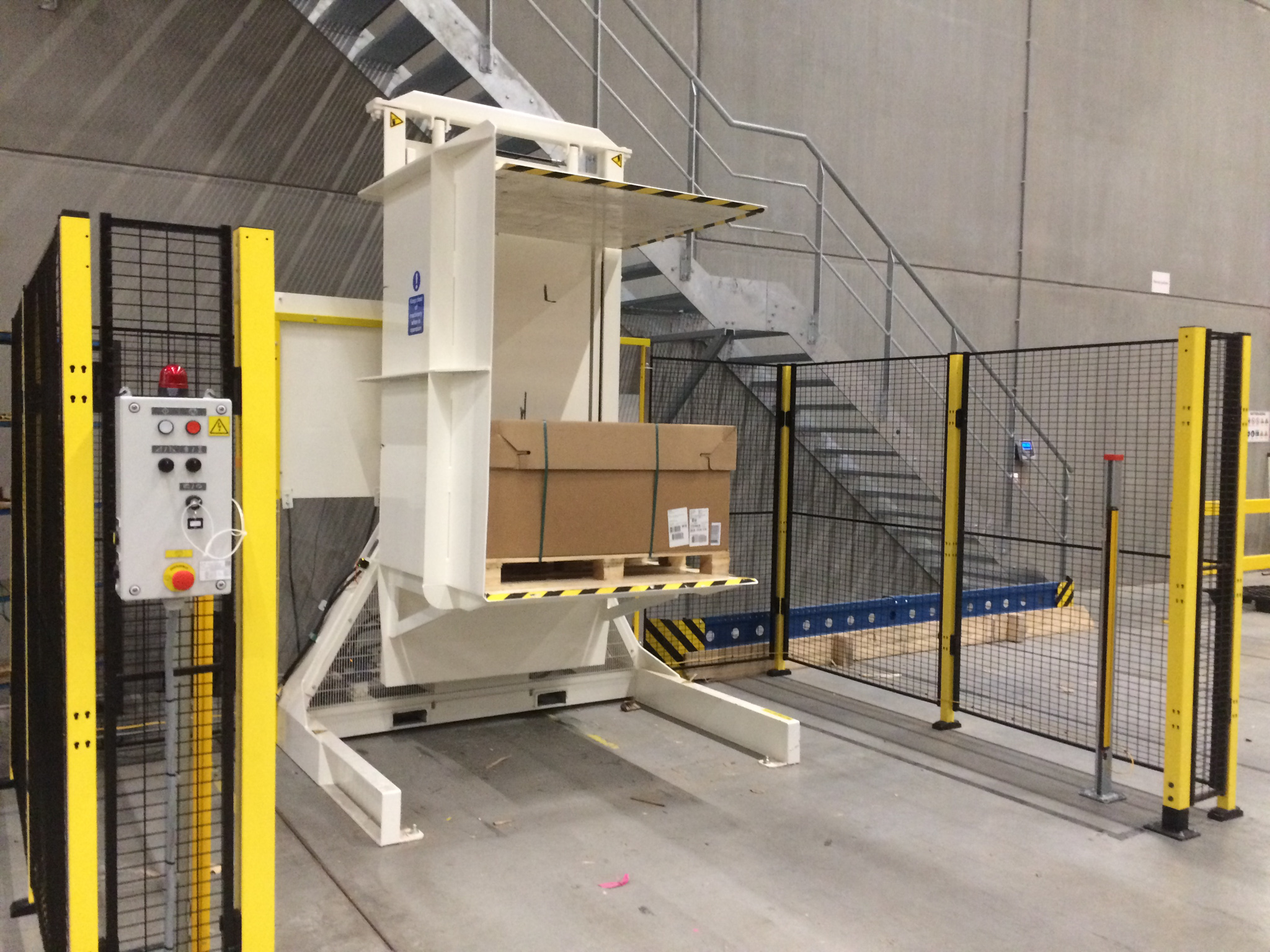
Dive Deeper: Designing for Cleanliness
When we talk about a "hygienic" machine, it's about much more than just a coat of paint. It's a design philosophy that permeates every component. For businesses in Turkey exporting to the EU, meeting standards like HACCP and GMP is non-negotiable. The right equipment is fundamental to compliance.
Material is Everything: Stainless Steel vs. Painted Steel
A standard pallet inverter is often made from painted carbon steel. While fine for general logistics, it's unsuitable for a hygienic environment. The paint can chip or scratch, exposing the steel underneath. These scratches create microscopic crevices where bacteria can thrive. Furthermore, the exposed steel will rust in the damp, high-humidity conditions of a wash-down area or cold store. Stainless steel, on the other hand, is inherently corrosion-resistant. It has a passive chromium oxide layer that protects it from rust and makes it incredibly easy to clean.
- Grade 304 Stainless Steel: This is the workhorse for most food and beverage applications. It offers excellent corrosion resistance and durability.
- Grade 316 Stainless Steel: This grade contains molybdenum, which gives it superior resistance to chlorides (like salt and certain cleaning agents). It's the preferred choice for marine applications, brining operations, or facilities using more aggressive sanitation chemicals.
Engineering for Sanitation: Hygienic Design Principles
A truly hygienic machine is designed to be cleaned easily and effectively. This means looking beyond the material and at the physical construction.
- No Flat Surfaces: Horizontal surfaces should be minimized. Where they exist, they should be sloped to allow water to run off completely, preventing pooling.
- Eliminate Crevices: Welds should be continuous and polished smooth. Avoid bolt-on components where possible, as the gaps between parts can trap contaminants. Any enclosed sections, like hollow support tubes, should be sealed to prevent water from getting inside and harboring microbial growth.
- Wash-Down Rated Components: The electrical and hydraulic systems must be protected. Look for motors, sensors, and control boxes with an IP65 rating or higher. This rating certifies that the components are protected against dust ingress and low-pressure water jets from any direction, making them safe for regular, thorough cleaning.
| Feature | Standard Pallet Inverter | Hygienic Pallet Inverter | Importance for Food/Pharma |
|---|---|---|---|
| Main Material | Painted Carbon Steel | Stainless Steel (304/316) | Prevents rust and bacterial growth. |
| Construction | Bolted sections, hollow tubes | Continuous welds, solid components | Eliminates crevices where contaminants hide. |
| Surfaces | Many flat, horizontal surfaces | Sloped surfaces, rounded corners | Ensures easy water runoff, no pooling. |
| Cleaning | Wipe-down only | High-pressure wash-down safe | Allows for effective sanitization. |
| Compliance | General Industry | HACCP, GMP | Essential for regulatory approval. |
How does the ROI calculation for a pallet inverter differ in the Turkish market?
When I decided to start my own factory, every lira counted. I analyzed every major equipment purchase with intense scrutiny. It's easy to look at the price of a machine and see it as a huge expense. But the real cost, the one that can sink your business, is the cost of not investing in the right equipment. You might be struggling with high labor costs, constantly replacing products damaged by poor handling, or paying exorbitant rental fees for special pallets. These are the hidden costs that bleed your business dry day after day.
This is a lesson I learned from the steel industry. A breakdown in a critical machine doesn't just stop that one machine; it stops the entire production line. The cost of that downtime is immense. You have workers standing around, orders being delayed, and customers getting angry. You quickly learn that the upfront price of a reliable machine is a small price to pay for operational stability. A proper Return on Investment (ROI) calculation helps you see this clearly. It moves the conversation from "How much does it cost?" to "How much will it make me?" It frames the purchase not as an expense, but as a strategic investment in efficiency, safety, and growth.
In the Turkish market, the ROI for a pallet inverter is uniquely compelling due to a combination of local economic factors and its strategic position in global trade. The calculation goes beyond simple labor savings and must include the high cost of specialized rental pallets, the significant financial risk of rejected export shipments, and the tangible value of improved worker safety. Reducing product damage and speeding up truck turnaround times also contribute directly to a faster payback period, making it a powerful investment for forward-thinking Turkish companies.
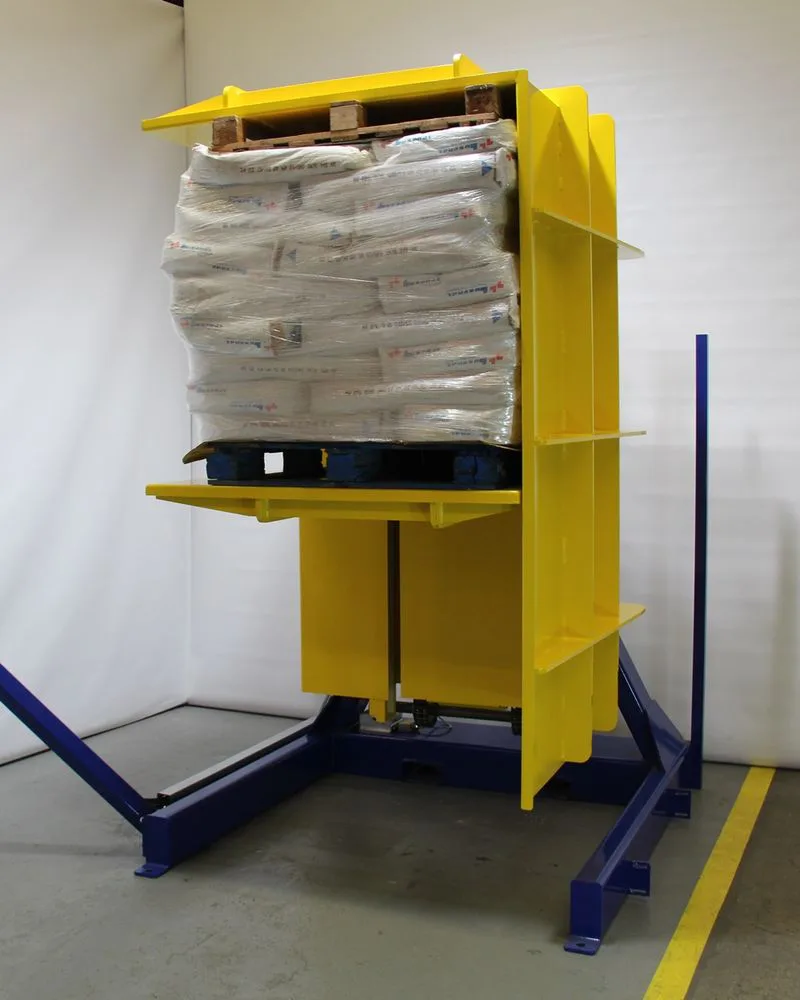
Dive Deeper: Calculating the True Value
A solid ROI calculation is your best tool for justifying a capital expenditure. It provides clear, undeniable data. Let's build a sample case tailored to the realities of the Turkish market.
Direct, Quantifiable Savings
These are the hard numbers you can take to the bank.
- Labor Savings: Assume it takes two workers 15 minutes (0.25 hours) to manually swap a pallet. If your average loaded labor cost is, for example, 150 TRY per hour, that's 75 TRY per pallet. An inverter with one operator takes 90 seconds (0.025 hours). At the same labor rate, that's just 3.75 TRY. If you swap 40 pallets a day, the savings are significant.
- Manual: 40 pallets x 75 TRY = 3,000 TRY/day
- Inverter: 40 pallets x 3.75 TRY = 150 TRY/day
- Daily Savings: 2,850 TRY
- Pallet Rental Cost Avoidance: Many companies in the food and pharma industries rent expensive hygienic plastic pallets from pools like CHEP or LPR for internal use. These costs add up. An inverter allows you to receive goods on cheap, one-way wooden pallets and immediately transfer them to your own "captive" fleet of plastic or aluminum pallets. This can save you thousands of euros every month in rental fees.
- Product Damage Reduction: Be conservative. Let's say manual handling results in a 0.5% damage rate. If you handle 1,000,000 EUR worth of product a month, that's 5,000 EUR in lost product. A pallet inverter's gentle handling can reduce that to nearly zero, saving you that 5,000 EUR month after month.
Indirect Savings and Strategic Value
These benefits are harder to quantify but are often even more valuable.
- Avoiding Export Rejection: A single container of goods rejected at an EU border because of a non-compliant or damaged wooden pallet can cost you tens of thousands of euros in transport, storage, and lost product. An inverter is a powerful insurance policy against this catastrophic event.
- Improved Safety: The cost of one serious workplace back injury can easily exceed the cost of the machine itself, when you factor in medical bills, lost productivity, and potential insurance premium increases.
- Increased Throughput: Faster truck turnaround means you can handle more volume without expanding your facility. It also improves your reputation as an efficient partner, which is a competitive advantage in Turkey's bustling logistics sector.
| Cost/Saving Area | Manual Process (Annual) | With Pallet Inverter (Annual) | Annual ROI Contribution |
|---|---|---|---|
| Initial Investment | 0 EUR | -60,000 EUR (Example Cost) | -60,000 EUR |
| Labor Cost | 712,500 TRY (~35,625 EUR) | 37,500 TRY (~1,875 EUR) | +33,750 EUR |
| Product Damage | 60,000 EUR | 3,000 EUR (estimated) | +57,000 EUR |
| Pallet Rental Fees | 24,000 EUR | 0 EUR | +24,000 EUR |
| Year 1 Net | +54,750 EUR |
(Note: Assumes 250 working days. TRY/EUR rate is for illustration.)
As you can see, even with conservative estimates, the payback period can be just over one year.
What are the key considerations for integrating a pallet inverter into an existing Turkish warehouse system?
You've done the research, you've calculated the ROI, and you've chosen the perfect pallet inverter. But the job isn't done yet. Buying the machine is just the first step. If you don't plan for its integration properly, this powerful tool can become a source of frustration. You can't just drop it on the floor and expect it to work miracles.
I've seen it happen. A customer buys a machine without measuring their space correctly. It arrives, and the installation team discovers it won't fit, or the forklift can't access it properly. Or maybe the power supply in that part of the warehouse is wrong. Suddenly, your smooth installation turns into a series of expensive delays, with electricians and builders having to be called in. All of this costs time and money and stops you from getting the benefits of your new investment. A little bit of planning upfront avoids a lot of headaches later. Proper integration means the machine works with your process, not against it.
When integrating a pallet inverter into a Turkish warehouse, the key considerations are the physical footprint and layout, ensuring adequate space for the machine and forklift access. You must also verify the electrical requirements, such as voltage and phase, match your facility's supply. Crucially, you must plan the operational workflow around the machine to eliminate bottlenecks. Finally, providing thorough operator training and establishing a clear maintenance plan are essential for ensuring long-term safety, reliability, and efficiency.
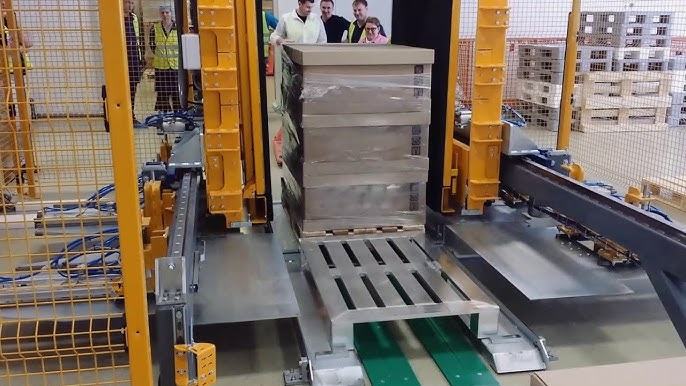
Dive Deeper: A Smooth Integration Checklist
A successful integration is all about planning the details. A good supplier will work with you as a partner on this, but it's important for you to know what to look for. Think of it as preparing a foundation before building a house.
The Physical and Infrastructure Audit
Before the machine is even ordered, you need to audit the intended location.
- Space and Layout: Get the machine's exact footprint from the supplier, but don't stop there. You need to account for the "operational footprint." This includes clear space in front and behind (or on the sides) for a forklift or pallet jack to approach, load, and unload safely. You also need space for staging pallets—the incoming pallets to be swapped and the stack of empty house pallets.
- Floor Loading: Pallet inverters are heavy, and when they are holding a full load of product, the combined weight can be substantial. You must confirm that the concrete floor in the chosen area can support this static weight. Your building's structural plans should have this information.
- Power and Utilities: This is a simple but critical check. Turkey's standard industrial power is 400V 3-phase, 50Hz, but you must confirm this at the exact installation point. Does the machine require a dedicated circuit? Does it need a compressed air line for any pneumatic functions? Confirming these details early prevents last-minute scrambling.
Workflow and Process Integration
The machine must fit into your flow of materials.
- Loading Method: How will you get pallets into the machine? If you use forklifts, you need a model designed for that. If you primarily use manual pallet jacks, you need a ground-level loading model or one that can be installed in a pit to be flush with the floor.
- Location, Location, Location: Where the machine is placed dictates its effectiveness. Should it be right at the receiving dock to swap pallets immediately upon arrival? Or should it be positioned at the entrance to a hygienic clean room, acting as a pass-through? The right answer depends on your specific process. Map out the journey of a pallet through your facility to find the most logical point for the exchange.
- Safety Systems: The inverter will come with its own safety features, like pressure-sensitive plates or light curtains. You need to consider how these will integrate with your facility's overall safety environment. This might mean adding physical guarding or floor markings to create a clear, protected operational zone around the machine.
People and Maintenance
Your team is key to success.
- Operator Training: While modern inverters are user-friendly, they are still powerful machines. Your supplier should provide comprehensive training for your operators on safe and efficient use.
- Maintenance Plan: Who is responsible for maintaining the machine? Will your in-house team be trained, or will you rely on a service contract from the supplier? Regular preventative maintenance (checking hydraulic fluid, lubricating moving parts) is vital for long-term reliability. A strategic partner will offer a clear support and maintenance plan.
Conclusion
Choosing the right pallet inverter for Turkey's cold chain is a strategic decision. Focus on hygiene, efficiency, and a partner who understands your long-term goals for a successful investment.

